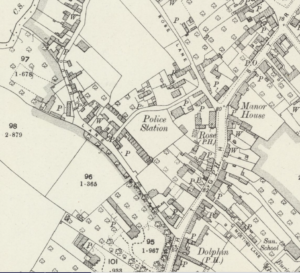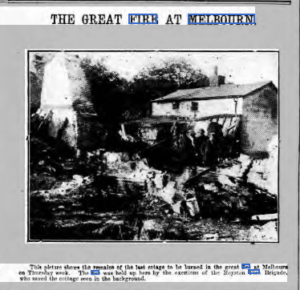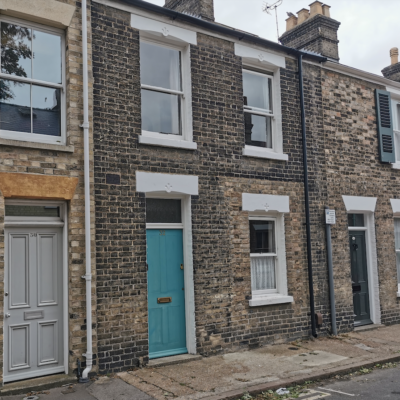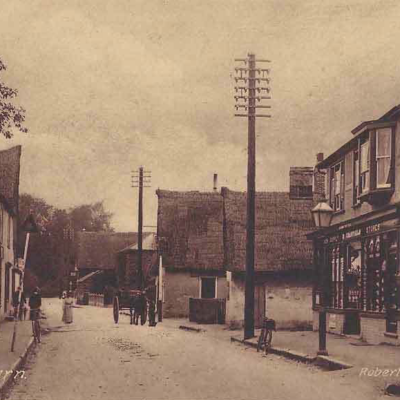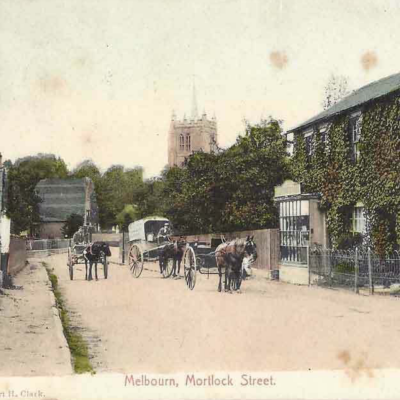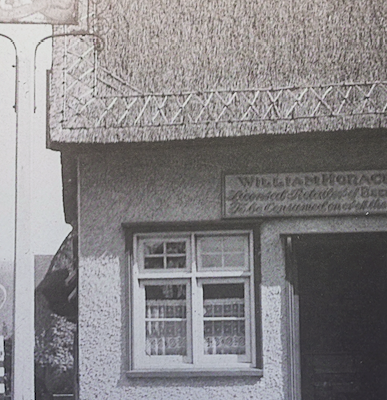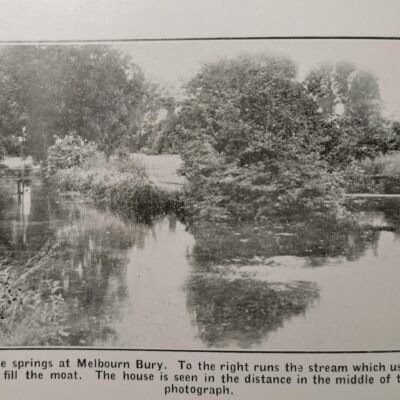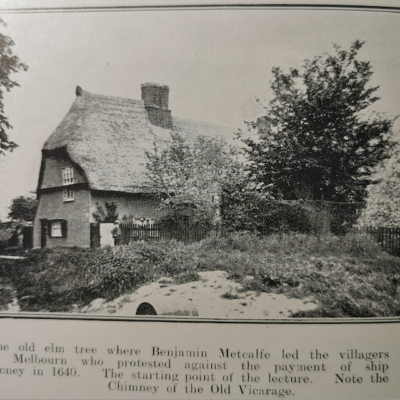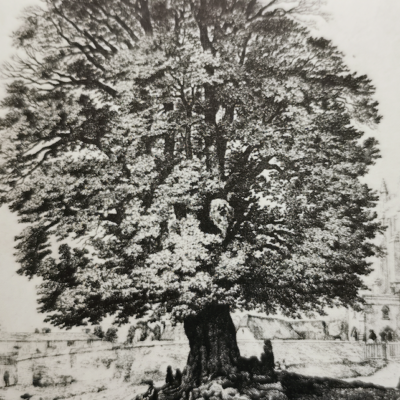Search by topic
- archaeology
- Building of Local Interest
- charity
- church
- crime
- dressmaker
- fire
- Great Eastern Railway
- Listed building
- Mapping Relief
- medieval
- oral history
- poverty
- Public House
- Rattee & Kett
- Religious House
- Roman
- scholar
- school
- Then and Now
- tudor
- women
- work
- world war one
- world war two
Search by text
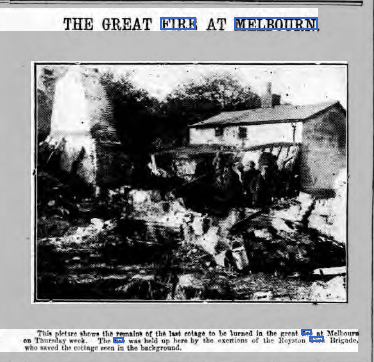 1915 Melbourne Fire - contemporary press photo
1915 Melbourne Fire - contemporary press photoMelbourn Fire – May 1915: Contemporary Newspaper Accounts
History of the 1915 Melbourn Fire
Morning Post June 1915
Serious Village Fire Thirteen Cottages destroyed
A disastrous fire occurred on Thursday afternoon [27th May 1915 Thursday] at the village of Melbourn, Cambridgeshire, three miles from Royston, whereby thirteen cottages and other property were destroyed. The origin of the outbreak is uncertain but the fire was first notice d in the neighbourhood of a blacksmith’s shop, and it spread with great rapidity among the thatched cottages in Rose Lane, Police Street Lane [Cross Lane] and Dolphin Lane in the middle of the village, the inhabitants barely having time to escape with their lives, and no chance of saving their belongings. There seemed at one time to be danger of flames reaching the church. Within about an hour the thirteen cottages were destroyed, together with various outhouses and several barns belonging to Mr Clear and Miss Stockbridge, Some of the cottages were not occupied. The families rendered homeless bear the names of Guiver, Lee, Pateman, Chapman, Frost, Baker, Carrington, Thurley and Blows. One woman with some young children had just lost her husband in the war. A newly married couple who had taken one of the cottages only this week lost almost everything, while Mr Charles Frost, a well known local cyclist, has lost many valuable prizes, amounting to £60, as well as money. At the outset of the fire the Melbourn Fire Brigade got to work, but could do little with their manual engine. The Royston steam fire engine was soon on the scene, and the Baldock Fire Brigade also rendered assistance. Some adjoining property was saved by them, but the damage done amounts to several thousand pounds. The police from some distance around rendered great service, and the sufferers were looked after by a committee, which included the High Sheriff and the Vicar.
…………………
Royston Crow & Cambridge Independent Press 28th May 1915
High Families Homeless
The village of Melbourn was visited yesterday afternoon with the most disastrous fire ever known in the locality, by which 13 cottages, several barns and between 20 and 30 outbuildings were totally destroyed and eight families rendered homeless. Fortunately the fire occurred in the daytime, and aid was quickly forthcoming or the results might have been even more disastrous, as one eye witness described it, ‘it travelled as fast as a man could walk.’
The Melbourn Fire Brigade turned out promptly under Captain J Newling, and did all they could to check the progress of the flams. The Royston Fire Brigade, with their steam Fire Engine, arrived on the scene as quickly as the horses could gallop, but their efforts and those of the Baldock Fire Brigade, whose steam fire engine was towed the 12 miles from Baldock to Melbourn by a military transport lorry, were directed to saving the adjacent property, the fire by the time they arrived having reduced practically all the premises involved to a heap of ruins.
The fire made a clean sweep of everything, and in an amazingly short space of time the whole of the buildings were levelled to the ground, scarcely a brick left standing. The work of the fire brigades, the police, the Emergency Committee and the Special Constables merits high praise. But for the copious streams of water pumped up from the river by the power steam engines and the skilful manner in which they were directed, the damage must have been much more extensive, while the police and special constables rendered invaluable assistance in helping the inhabitants to escape and to rescue some of their goods and chattels, and the Emergency Committee did admirable work in arranging for the temporary feeding and housing of the homeless families.
The scene of the fire was Rose Lane, Police Station Lane and Dolphin Lane, in the centre of the village. Along these lanes clustered a number of old fashioned thatched cottages, barns and outbuildings, most of them built of ‘clay bats’, large oblong blocks of sun dried clay mixed with straw, with here and there a brick and tiled building.
The Police Station and Court House abut on Police Station Lane [Cross Lane], and had an extremely narrow escape, being almost surrounded by burning buildings. Thanks however to the efforts of the fire brigades and to its substantial construction, this valuable block of buildings escaped almost unscathed; but for a considerable time it was in great danger.
The origin of the fire appears to be uncertain, but the flames were first noticed in the vicinity of a blacksmiths shop, in the occupation of Mr J Buller, wheelwright and blacksmith. Here a man named Jackson had been at work, but had gone to dinner. The alarm was quickly given, and the Melbourn Fire Brigade turned out promptly, and did good service with their manual engine, but at first the supply of water was limited, the river being some four hundred yards from where the fire first broke out. The flames spread with appalling rapidity and threw out an intense heat, which rendered it impossible to approach near to them except on the windward side. Flakes of burning thatch and showers of sparks were borne on the breeze, and showering down on the thatched roofs of the adjoining cottages speedily set ablaze. The flames poured across the narrow lanes set trees alight, and ran from house to house with such speed that some of the inhabitants barely had time to escape, and lost practically all their belongings.
In less than three quarters of an hour the whole of the 13 cottages were blazing furiously and an hour sufficed to level them to the ground. The buildings destroyed included part of the blacksmiths shop, some thatched cottages hard by, an unoccupied brick villa opposite the Police Station, a block of buildings at the back of the Rose public house, several barns belonging to Mr W W Clear, a number of cottages along Police Station Lane, two big barns an some stables belonging to Miss Stockbridge, two cottages belonging to Mrs Palmer, and a number of outbuildings.
Mr G A Ward’s builder’s yard in High Street, containing a large quantity of valuable materials, and some of the houses adjoining, had a very narrow escape, and a thatched house on the opposite side of the High Street was only saved by covering the thatch with a large rick cloth and copious drenching of water. The majority of the cottages it is believed, belonged to Mr W W Clear. The total damage is estimated at several thousand pounds.
At the Dolphin Lane end of Police Station Lane the Royston Fire Brigade succeeded in saving 4 slated cottages and a number of thatched cottages.
Several of the inhabitants were away at the time, the men being at their work and the women engaged in gooseberry picking. All that remains of the whole of the premises are heaps of smouldering ruins and a few twisted fragments of bedsteads and other domestic articles.
The Royston Fire Brigade received the alarm a few minutes before 2 o’clock from Mr Bentley of Royston, who happened to be motoring through Melbourn at the time, and drove off point haste to Royston. The Brigade turned out smartly under Capt. Bedwell and Second Officer Sheldrick, and were at work on the fire by about 2.30. They placed their fire engine in a field adjoining Dolphin Lane and pumped direct from the river.
The Baldock Fire Brigade received the call about 20 minutes to three. Fortunately a military motor lorry was at hand, and the soldiers kindly consented to tow the fire engine to Melbourn and covered the 12 miles in such good style that the brigade were able to have their steamer at work close to the river shortly after 4 o’clock.
Deputy-Chief Constable Webb, Supt Salmon, Sgt Connell (Melbourn) Sgt Chapman (Royston) and PC’s Newell (Barrington) Martin (Harston), Frost (Fowlmere), Worboys (Arrington), and several others were seen in attendance and rendered invaluable service, and the occasion afforded an excellent example of the value of the Emergency Committee and the Special Constables who did admirable work.
The High Sheriff, Mr A R Fordham, the Vicar (Rev M de Courcy-Ireland and Mrs de Courcy-Ireland), the Rev W H Wrigley and a number of local ladies, who at once took steps to feed and house those who had been rendered homeless, providing tea and temporary accommodation for them in the Congregational school room.
It is something like 32 years since the last big fire occurred in Melbourn. On that occasion two large farmhouses and many outbuildings were destroyed.
Rev J Grant, the Baptist Minister was also on the committee.
………………….
BIG BLAZE AT MELBOURNE – 13 COTTAGES DESTROYED
Herts and Cambs Reporter May 1915
A hard fight
A piece of burning thatch alighted on some straw covering a heap of mangold wurzels in the farmyard occupied by Mr W Stockbridge at the back of the residence of the Misses Stockbridge, in the High Street. A man in the yard hastened to trample it out but before he could do anything the straw was in a blaze, and a large barn, one of the largest barns in Melbourn, was on fire, which quickly spread to other buildings, and were all soon destroyed. Several valuable horses in one of the buildings were got out uninjured. All this had taken place almost as quickly as it takes to tell the story. The spot where the fire started on Mr Bullen’s premises backs onto Mr Disbrey’s premises and seeing the flames he called to Mr O Campkin and together with Mr Jubal Howard, they quickly had the Melbourn Fire Engine out, and then with the engine in the Dolphin Yard, and with pails of water, a hard fight ensued for the saving of Miss Stockbridges house, and this was accomplished after all the furniture had been removed. Sparks from the burning buildings flew across the street on to the thatch of the houses opposite, occupied by Mrs Thixton and Mr W King, but men with ladders and pails of water and tarpaulins managed to keep the fire from getting a hold. At one time it looked as if that side of the High Street would suffer but fortunately the spread in this direction was prevented.
Scenes in Dolphin Lane
In Dolphin Lane the fire was spreading with alarming rapidity, and cottage after cottage soon became a raging furnace. The distracted cottagers were rushing hither and thither with their household goods, removing them from one place to another as the remorseless flames followed them up. Eventually they carried them into a meadow on the opposite side of the lane, and here heaps, some small and some fairly large, of furniture, crockery and household utensils were to be seen with an occasional elderly dame sitting by with a terrified helpless expression on their withered faces, or perhaps some of the younger members of the family were left in charge of the heap whilst their elders lent a helping hand to other neighbours.
Timely arrival of the Royston fire brigade
Mr and Mrs Bentley, of Heathfield, Royston, were motoring though the village a few minutes after the fire broke out, and seeing it was likely to be a serious conflagration they drove on to Royston and gave the call to the Royston Fire Brigade. The alarm rockets went off a few minutes before two o’clock, and the brigade with their steamer were at Melbourn by 2.20. A way through Mrs Dandy’s grounds was opened for them, and they at once drove in and were able to reach the river in the quickest possible time. It however seemed hours to the anxious watchers before a stream of water was brought to play upon the burning buildings, although it was only about ten minutes. The river is a goodish distance away, and many lengths of hose had to be coupled up before the fire was reached.It was useless to play upon any of the 13 cottages which were then well ablaze, in fact, many of them were cottages no more.The Brigade turned their attention to the later buildings that had caught fire. A tarred shed at the back of Rose Cottage was burning fiercely and emitting dense volumes of smoke, and two other cottages nearby were ablaze, and it was here the Brigade managed to check the progress of the fire. Beyond this were many other thatched cottages on either side of the narrow lane, and had the fire been allowed to get any further there must have been a far more terrible loss of property. By 3.30 the progress of the fire had been stopped, and people began to bring back their property to those houses which the fire had spared.
Baldock Fire Brigade on the scene
A call was sent to the Baldock Fire Brigade at a time when the whole village looked like being involved. The Brigade, with their steamer, drawn by an Army Motor transport Wagon, arrived a a few minutes before 4 o’clock, and rendered valuable aid in damping down and removing dangerous parts of the ruin.The Brigade in their start from Baldock had some difficulty in finding horses. There was an R E Motor transport in town, and the officer in charge readily gave his consent for the men to take the Fire Engine in tow. Several of the ‘Boys’ in khaki from Royston and other places near by were to be seen helping the poor folk to remove their furniture.
For more photos of the aftermath of the fire and commentary on Melbourn’s history generally see:
Contribute
Do you have any information about the people or places in this article? If so, then please let us know using the Contact page or by emailing capturingcambridge@
License
This work is licensed under CC BY-NC-SA 4.0





